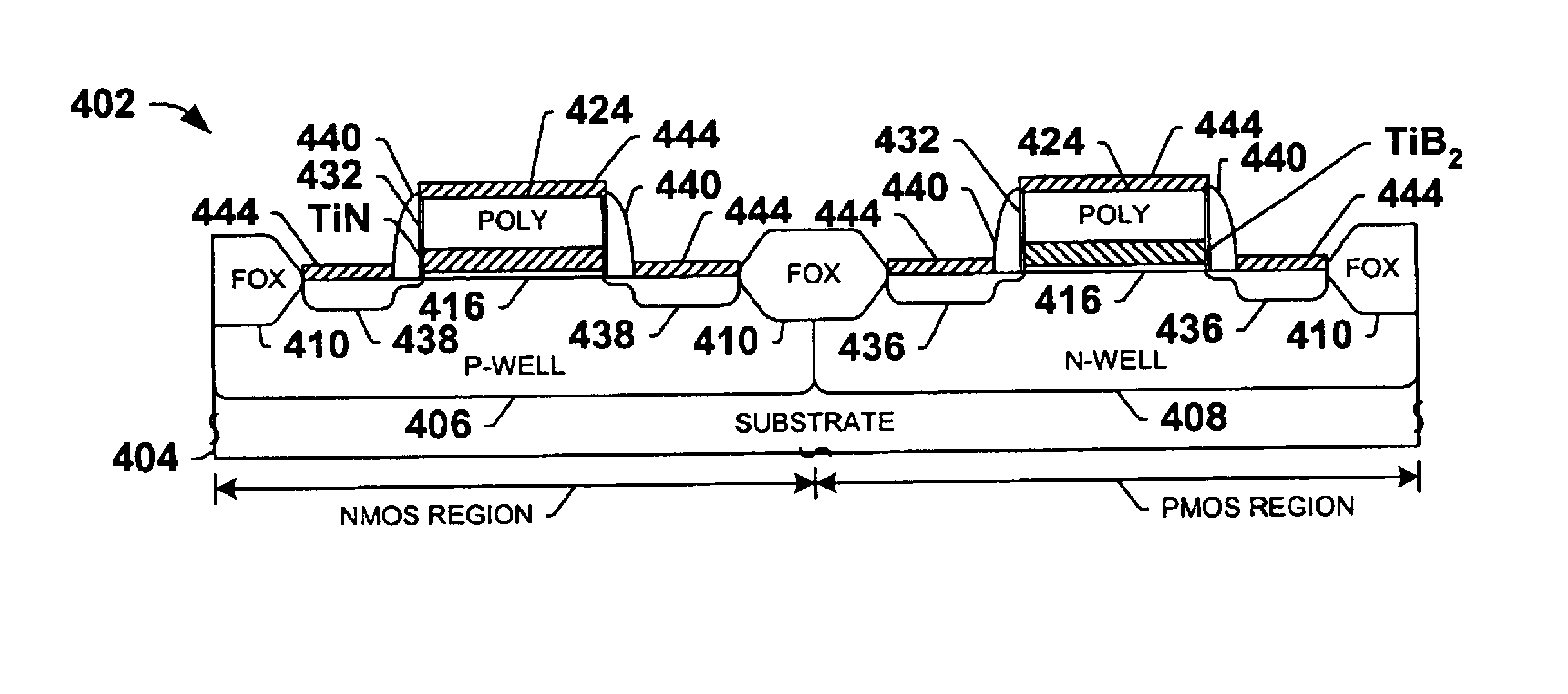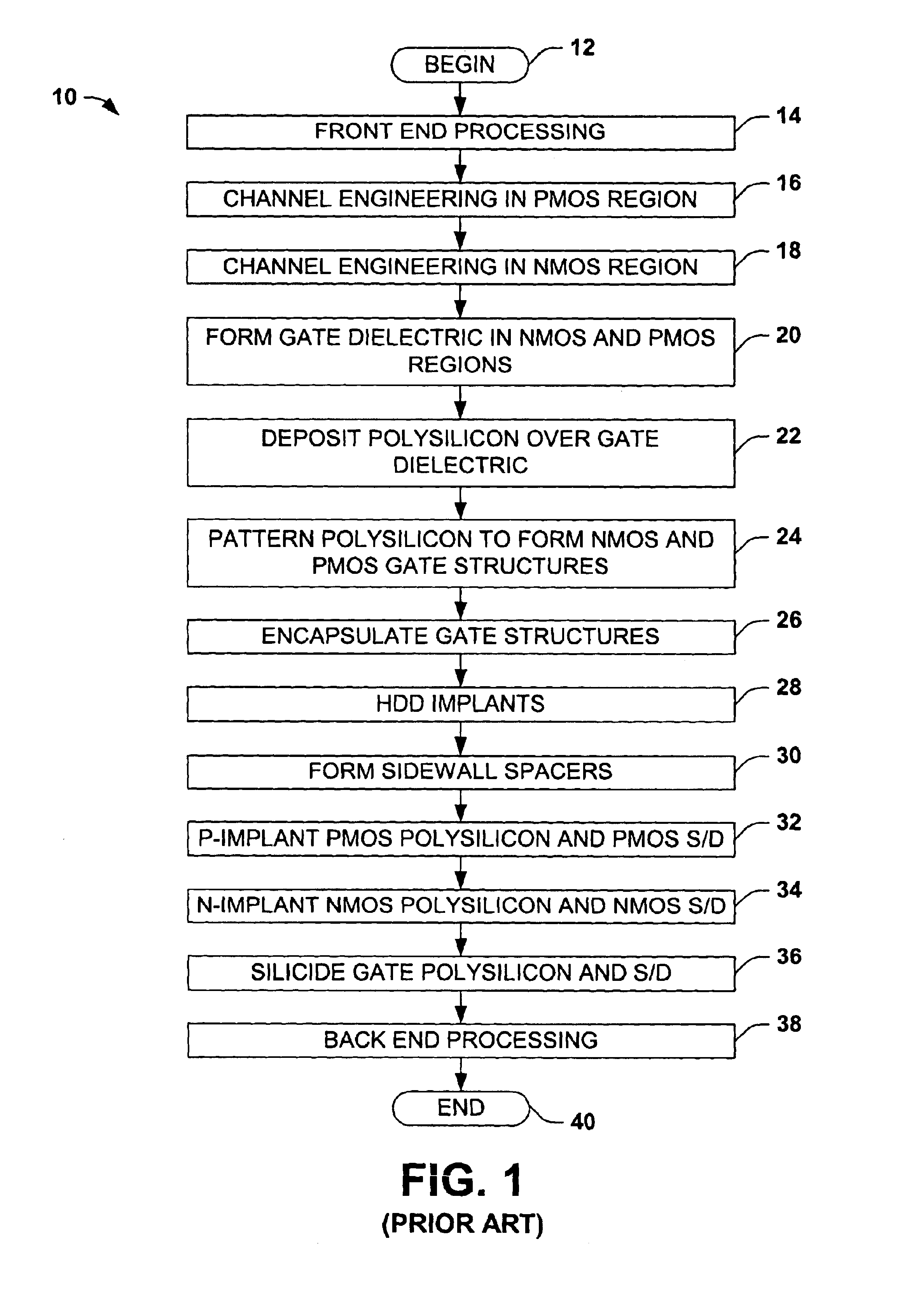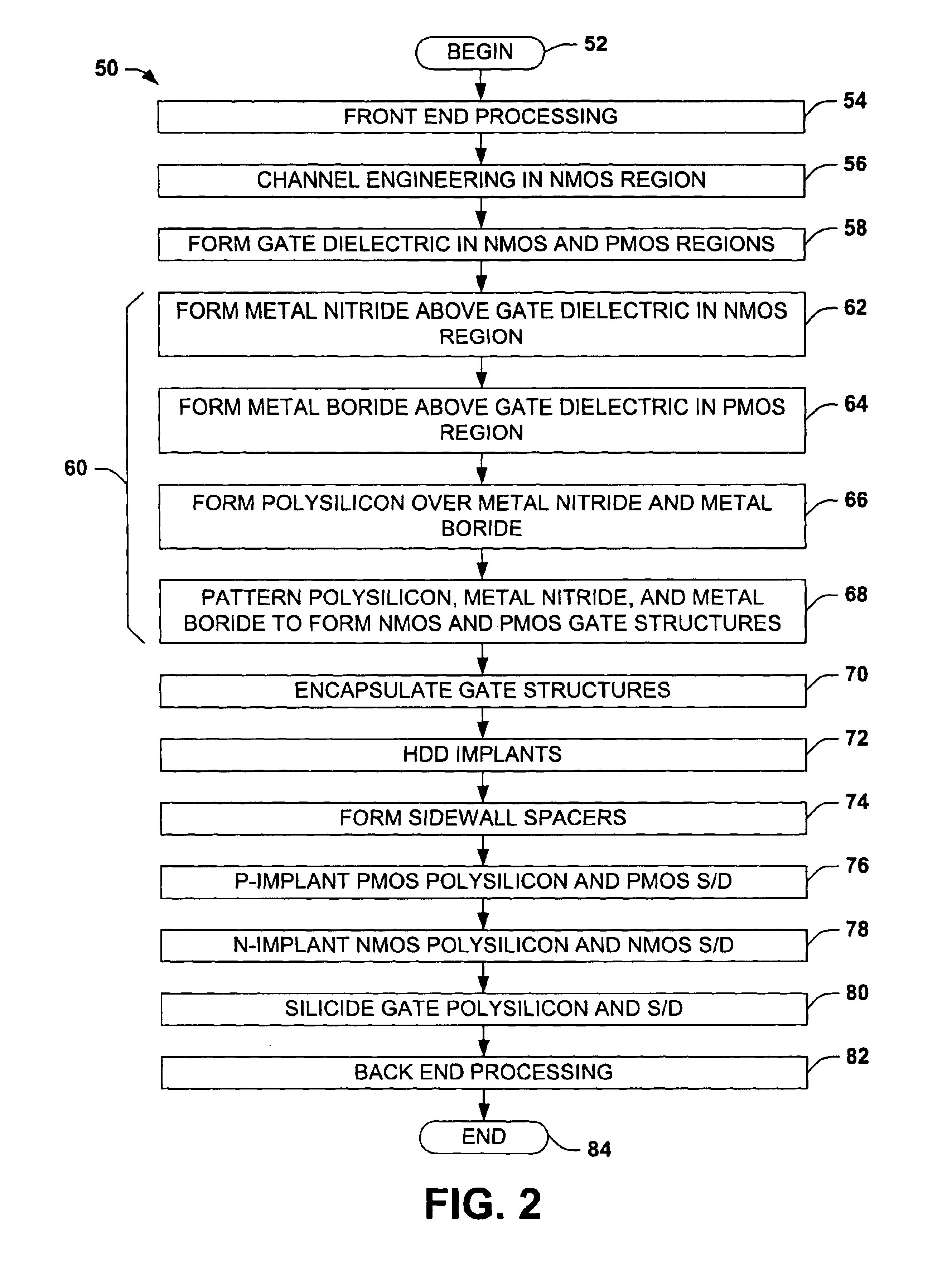Metal gate MOS transistors and methods for making the same
a technology of metal gate mos and transistor, which is applied in the direction of semiconductor devices, basic electric elements, electrical equipment, etc., can solve the problems of not being able to adjust the work function value of tin gate, not being able to achieve the optimization of pmos or nmos transistor work functions, and not being able to achieve large-scale adjustment of work functions, so as to reduce process time, reduce cost, and reduce process tim
- Summary
- Abstract
- Description
- Claims
- Application Information
AI Technical Summary
Benefits of technology
Problems solved by technology
Method used
Image
Examples
Embodiment Construction
[0026]One or more implementations of the present invention will now be described with reference to the attached drawings, wherein like reference numerals are used to refer to like elements throughout, and wherein the illustrated structures are not necessarily drawn to scale. The invention relates to metal gate CMOS devices and fabrication methods in which metal nitride and metal boride gate contact materials are used for NMOS and PMOS transistors, respectively. The invention may be employed to simplify channel engineering steps in particular, and fabrication processing generally, while mitigating or eliminating the poly depletion shortcomings of conventional CMOS devices, and without having to use different metal starting materials in gate fabrication.
[0027]In the methods and devices of the invention, metal nitride is formed above a gate dielectric in an NMOS region and metal boride is formed above the gate dielectric in a PMOS region, wherein these and the gate dielectric may be fo...
PUM
| Property | Measurement | Unit |
|---|---|---|
| work function | aaaaa | aaaaa |
| work function | aaaaa | aaaaa |
| work function | aaaaa | aaaaa |
Abstract
Description
Claims
Application Information
 Login to View More
Login to View More - R&D
- Intellectual Property
- Life Sciences
- Materials
- Tech Scout
- Unparalleled Data Quality
- Higher Quality Content
- 60% Fewer Hallucinations
Browse by: Latest US Patents, China's latest patents, Technical Efficacy Thesaurus, Application Domain, Technology Topic, Popular Technical Reports.
© 2025 PatSnap. All rights reserved.Legal|Privacy policy|Modern Slavery Act Transparency Statement|Sitemap|About US| Contact US: help@patsnap.com



